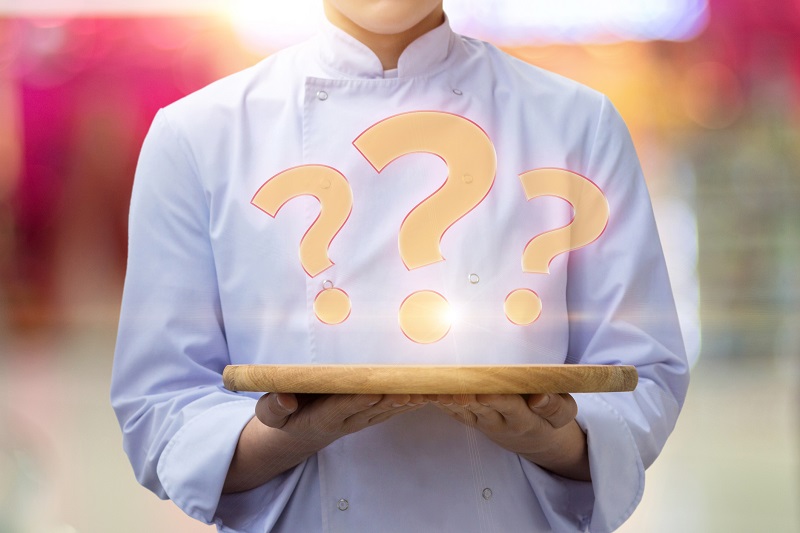
Formerly a senior advisor on global food policy and agricultural trade at the U.S. Department of State for 13 years, Jack Bobo is CEO of Futurity, a food foresight company that helps brands get ahead of trends. He offers a thought-provoking insight into why we have a fear of food, yet it has never been safer.
A World of Food Fear

Preservatives, artificial food colorings, gluten, and more… the grocery store aisle can be a scary place these days. It seems like there are new stories from social media influencers every day about potent food additives or ingredients that will either kill you or make you live forever. Despite what we hear in the media and find in our Facebook feed about the dangers that lurk behind the label, the fact is that our food has never been safer than it is today.
Why is it then that consumers have never been more worried about the foods they eat? And here’s another paradox: At a time when consumers have never known more about nutrition, why is it that obesity is at an all-time high? In November 2018, I took to the TEDx stage in Tysons Corner, Virginia to explore these important topics in my talk, “Why we fear the food we eat.”
The rise of “clean eating” and the marketing of “natural” foods has not made us feel safer. Instead, these trends leave us less certain and less confident in the food choices we make. The proliferation of new diets isn’t making us healthier, it’s just making us more confused.
According to a survey by the International Food Information Council (IFIC), consumers consider making healthy food choices harder than doing their taxes. In an environment like this, what is a consumer to do? How can we sort through all this alarming noise, reduce food anxiety, and make good diet choices that will give us the healthy lifestyle we all want to enjoy?
Information Overload in the Grocery Aisles
It turns out that there are clear psychological principles behind the confusion and fear so many of us are feeling about our food. The way our brains process information has a lot to do with how we respond to food marketing, from the labels on the packages and products on the shelves to the recommendations of social media influencers. We are bombarded with messages and information as we walk the aisles of the local grocery store. Gluten-free, GMO-free, cage-free, pesticide- free… it seems the less a product contains, the more a company can charge for it. Today the average grocery store carries about 40,000 items, presenting a daunting list of choices for every shopper. There are thousands more new products coming to the shelves soon, and a similar number of failed products departing each year.
The dizzying array of food information in the modern world is too much for one person to handle. We already have overly-complex lives just keeping up with installing the latest new operating systems. Having to sort out complicated choices about food can easily feel like too much to manage, and our overworked brains want a way out. Just as students look for shortcuts between classes, our minds look for shortcuts in making decisions. Psychologists refer to the mental shortcuts our brains use as heuristics and cognitive biases, and these are important concepts in understanding how we make decisions or form opinions.
Mental Shortcuts: Heuristics and Biases
Heuristics are rules of thumb that help us efficiently solve complex problems by ignoring some of the information. Heuristics keep us from going crazy by reducing the load on our mental processors, but they also have their limitations. Mental shortcuts can leave us susceptible to influences that we may not recognize. And sometimes these simplistic rules lead us to bad decisions. A heuristic that results in consistently incorrect decisions (“systematic errors”) is called a cognitive bias.
Our beliefs and behavior are shaped by these invisible influences. When we are making judgments and decisions about the world around us, we like to think that we are being objective and logical. Unfortunately, biases can trip us up, leading to poor decisions and bad judgments. These powerful forces can even lead us to choices that are at odds with our actual goals, such as nutritional health. We can become our own adversaries when we are guided by influences we don’t understand.
Confirmation Bias as An Example
Let’s take the example of confirmation bias, which is familiar to many people. Confirmation bias is the tendency to interpret new evidence as confirmation of our existing beliefs. We seek out information that confirms our beliefs, and we ignore or discount information inconsistent with our beliefs, because it’s easier to entrench more deeply than it is to change our minds. It’s easy to see this bias in others, but nearly impossible to convince them of it. It is also remarkably difficult to recognize it in ourselves. That’s the nature of heuristics and biases, but by learning about them and facing them head-on, we can learn to perceive them and their effects, escape their control, and make our choices rationally and logically like we wanted to in the first place.
Confirmation bias influences many of our food decisions. From the products we buy to the brands we follow, our perceptions, likes, and dislikes are shaped by our existing biases. This make it difficult for new facts to filter through to our conscious mind and inform our decisions.
With each new fad diet, confirmation bias keeps us believing in the potential of the diet long after the evidence is in that it doesn’t work. With every pound we lose, we credit the diet. With each two pounds we gain, we blame ourselves for a lack of willpower. We forget that in order for a diet to work, people need to be able stick to it. We make excuses for the failures of the products or companies we like, but we question the successes of those we don’t like.
A Path Back to Rational Control—From Fear to Enjoyment
In a series of articles, I am going to explore how our brains try to make sense of the complex world around us and how it sometimes leads us astray. Confirmation bias is just one example of a misleading heuristic; there are many more. Predispositions can influence the way we perceive brands (such as the “halo effect”), the way we make choices (decision fatigue), and the characteristics of a product we choose to pay attention to (availability bias). Biases like these prevent us from thinking clearly and making accurate decisions, whether the matter at hand is our finances, our health, or the food we choose to eat.
There’s no way to avoid all of these potential biases—taking automatic shortcuts is just the way our minds work, after all. But being aware of the biases and shortcomings that are typical of human mental functioning can make a big difference in giving us more rational control over our decision-making processes. My goal is that you will fear less, and enjoy more, the food you eat. And this is an achievable goal. We will get there by learning some curious facts about how our minds work, and I’ll illustrate them with some interesting stories along the way.


